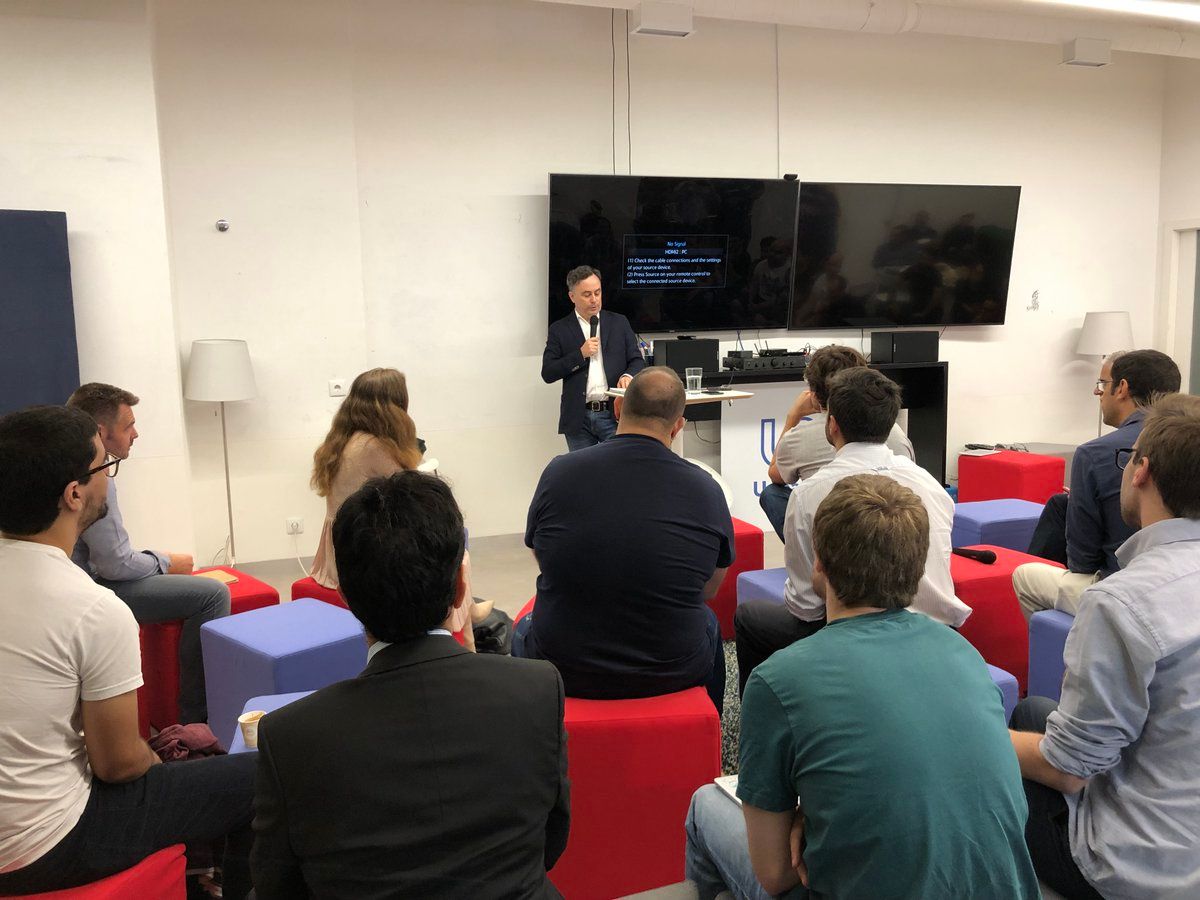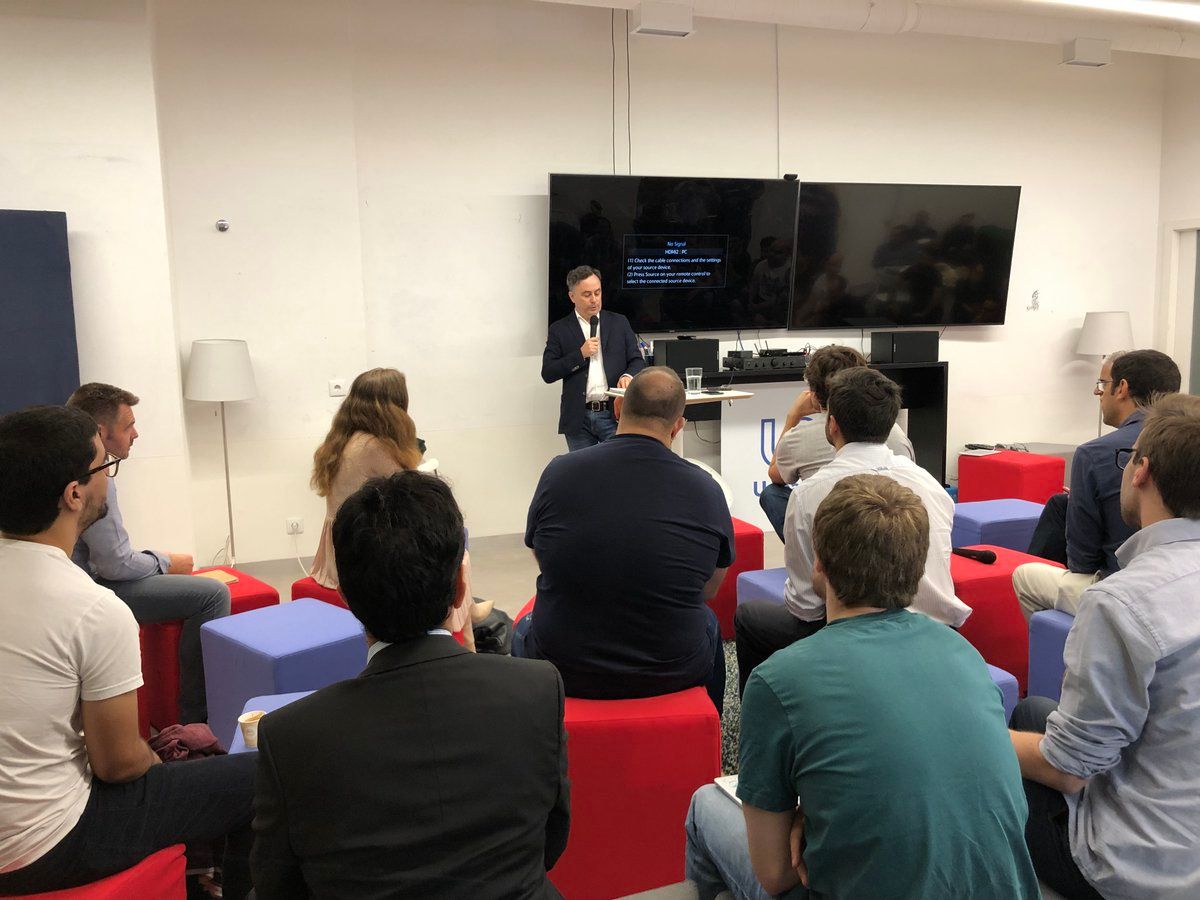Dark Traffic
This a report on a four-year long experiment in advertising a 'dark' prefix on the internet and examining the profile of unsolicited traffic that is sent to a traffic collector.Aparavi’s Storage Focus Is on Data, Not Devices
The offering features a hybrid and multi-cloud file backup tool that enables long-term retention...
Sprint’s 5G Prospects, Future at Stake Amid Merger Uncertainty
“I wouldn’t put another dime into the network," said industry analyst Earl Lum. "They’ve...
Heavy Networking 476: Running ACI And NSX In The Same Data Center
On today's Heavy Networking our guest walks us through a project that brought both ACI and NSX into the same data center at a very large company. We discuss the drivers for ACI in the underlay and NSX in the overlay, the learning curves on each product, challenges and successes, and more. Our guest is Derek Wilson, a Principal Network Consultant.
The post Heavy Networking 476: Running ACI And NSX In The Same Data Center appeared first on Packet Pushers.
Arm CEO Segars: Silicon Partners Can Now Create ‘Fully Unique Chips’
Arm CEO Simon Segars said that the company is adding a new feature to its processors that will...
US Eyes Nokia, Ericsson Subsidies to Fight Huawei
U.S. government officials are floating the idea of subsidizing Huawei's competitors to match the...
Forward Networks Secures Funds, Focused on Network Operations
The company raised $35 million in Series C funding that was led by Goldman Sachs, which is one of...
Microsoft, Pivotal Team on Azure Spring Cloud
The platform uses Kubernetes to make it easier to deploy and operate Spring Cloud applications and...
Templating Device Configurations
One of the core functions of network automation is the ability to generate network device configurations from a template. This is a discrete, intentional process which unfortunately is often conflated with the totally separate act of applying a rendered configuration to a device. In this article we'll look at how to establish a template from existing configurations, define and organize variable data, and ultimately render a series of configurations automatically using a simple Python script.
What is a Template?
The term template describes any sort of mold or pattern from which new, identical objects can be created. For instance, a cookie cutter is a sort of template that can be used to create an arbitrary number of identically-shaped cookies from a sheet of dough. But in our case, we're inexplicably more interested in creating network device configuration files than baking cookies, and creating wholly identical copies of a file isn't terribly useful, since each network device typically has a handful of unique characteristics such as hostname, authentication credentials, IP addresses, and so on.
To address this need to define changing pieces of data within an otherwise unchanging document, we employ variables. A variable serves as a placeholder within the template, Continue reading
Pi-Hole for home DNS
Pi-hole? Huh? DNS? What I am going on about now you may ask. Pi-hole is billed as a “Network-wide Ad …
The post Pi-Hole for home DNS appeared first on Fryguy's Blog.
Announcing the 2020 U.S. Presidential Campaign Audit

Today, the Internet Society’s Online Trust Alliance released a new report, the “2020 U.S. Presidential Campaign Audit,” analyzing the 23 top current presidential campaigns and their commitment to email/domain protection, website security, and responsible privacy practices. OTA evaluated the campaigns using the same methodology we used to assess nearly 1,200 organizations in the main Online Trust Audit released in April.
An alarming 70% of the campaign websites reviewed in the audit failed to meet OTA’s privacy and security standards, potentially exposing visitors to unnecessary risks. Only seven (30%) of the analyzed campaigns made the Honor Roll, a designation recognizing campaigns that displayed a commitment to using best practices to safeguard visitor information. The 2020 campaigns, taken together as a sector, lagged behind the Honor Roll average of all other sectors (70%) in the 2018 Online Trust Audit, and were far short of the Honor Roll achievement of 91% by U.S. federal government organizations.
To qualify for the Honor Roll, campaigns must have an overall score of 80% or higher, with no failure in any of the three categories examined. The campaigns who made the Honor Roll are:
- Pete Buttigieg
- Kamala Harris
- Amy Klobuchar
- Beto O’Rourke
- Bernie Continue reading
IBM Security, McAfee Spearhead Open Cybersecurity Alliance
The new group targets interoperable security technologies. IBM Security and McAfee contributed the...
Talk Transcript: How Cloudflare Thinks About Security


This is the text I used for a talk at artificial intelligence powered translation platform, Unbabel, in Lisbon on September 25, 2019.
Bom dia. Eu sou John Graham-Cumming o CTO do Cloudflare. E agora eu vou falar em inglês.
Thanks for inviting me to talk about Cloudflare and how we think about security. I’m about to move to Portugal permanently so I hope I’ll be able to do this talk in Portuguese in a few months.
I know that most of you don’t have English as a first language so I’m going to speak a little more deliberately than usual. And I’ll make the text of this talk available for you to read.
But there are no slides today.
I’m going to talk about how Cloudflare thinks about internal security, how we protect ourselves and how we secure our day to day work. This isn’t a talk about Cloudflare’s products.
Culture
Let’s begin with culture.
Many companies have culture statements. I think almost 100% of these are pure nonsense. Culture is how you act every day, not words written in the wall.
One significant piece of company culture is the internal Security Incident mailing list Continue reading
The Cost of Disruptiveness and Guerrilla Marketing
A Docker networking rant coming from my good friend Marko Milivojević triggered a severe case of Deja-Moo, resulting in a flood of unpleasant memories caused by too-successful “disruptive” IT vendors.
Imagine you’re working for a startup creating a cool new product in the IT infrastructure space (if you have an oversized ego you would call yourself “disruptive thought leader” on your LinkedIn profile) but nobody is taking you seriously. How about some guerrilla warfare: advertising your product to people who hate the IT operations (today we’d call that Shadow IT).
Read more ...MACsec over WAN
MACsec is an interesting alternative to existing tunneling solutions, that protects Layer 2 by performing integrity, origin authentication and, optionally, encryption. Normal use-case is to use MACsec between hosts and access switches, between two hosts or between two switches. This article is a leftover from MACsec on Linux that I first tested in 2016 when support for MACsec was just included in the kernel. I will describe how MACsec is used together with a Layer 2 GRE tunnel to protect the traffic between two remote sites, over WAN or Internet, like a site-to-site VPN at Layer 2.